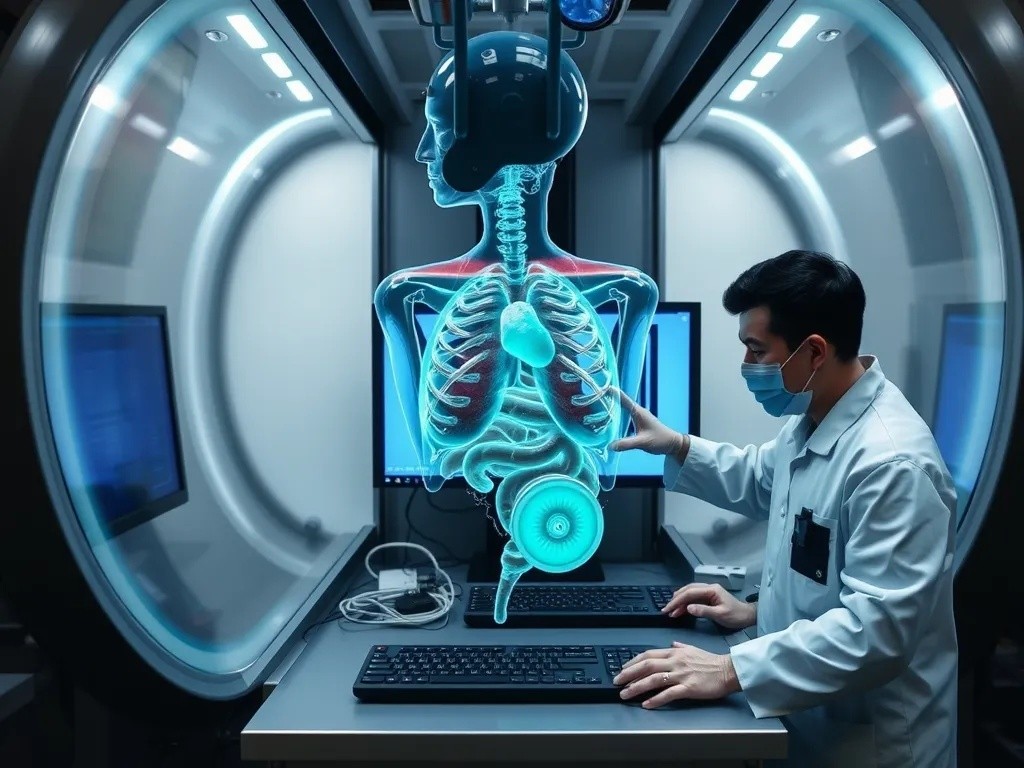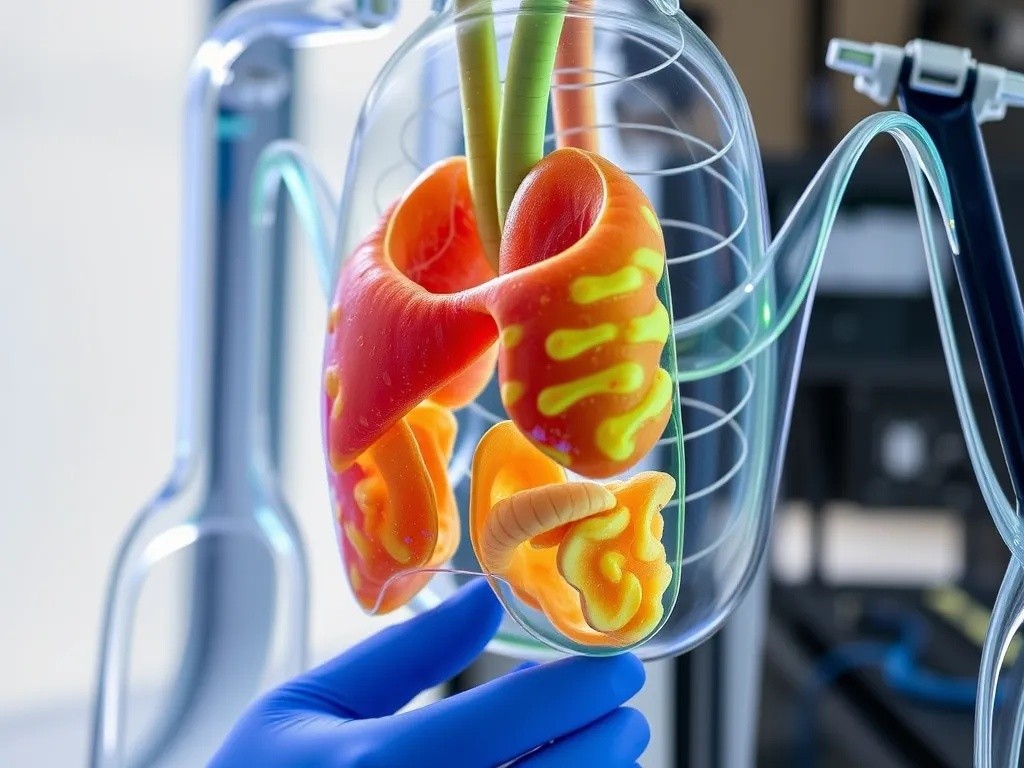In recent years, there has been a significant advancement in the field of Artificial Intelligence (AI) and Augmented Reality (AR). These technologies have become increasingly popular and have the potential to enhance virtual experiences in various fields such as gaming, education, healthcare, and...
Computer Learns to Grow Organs for Transplant Patients

A Medical Breakthrough Decades in the Making
One of medicine's greatest challenges is finally being addressed through the convergence of artificial intelligence and regenerative biology. Computer systems are now learning to grow functional human organs for transplant patients, offering hope to the thousands who die each year waiting for donor organs. This revolutionary technology combines machine learning, bioengineering, and cellular biology to create organs that are biologically compatible with recipients, potentially eliminating both the shortage of transplant organs and the risk of rejection that plagues current transplant procedures.
The Science of Computer-Guided Organ Growth
Bioprinting and Cellular Architecture
The process begins with three-dimensional bioprinting, where specialized printers deposit living cells layer by layer to construct organ structures. However, the complexity of human organs requires more than simple printing. This is where artificial intelligence becomes essential. Computer systems analyze the intricate architecture of healthy organs, learning the precise patterns of blood vessels, nerve pathways, and cellular organization that make organs functional. The AI guides the bioprinting process, ensuring cells are placed with the accuracy needed for proper organ function.
Machine Learning and Cellular Behavior
Growing organs involves understanding how cells communicate, divide, and organize themselves into functional tissues. AI systems study vast amounts of data on cellular behavior, learning the chemical signals and environmental conditions that encourage cells to develop correctly. These algorithms predict how cells will respond to different growth factors, temperatures, and mechanical forces, allowing researchers to optimize growing conditions. The machine learning models become increasingly sophisticated as they process data from successful and unsuccessful organ growth attempts.
The Organ Growing Process
From Patient Cells to Functional Organs
- Collection of patient stem cells through a simple blood draw or tissue sample
- Cellular reprogramming to create pluripotent stem cells capable of becoming any organ tissue
- AI analysis of patient anatomy through medical imaging to design custom organ specifications
- Computer-guided bioprinting of organ scaffold using biodegradable materials
- Seeding of scaffold with patient stem cells programmed to differentiate into specific tissue types
- Cultivation in bioreactor chambers with AI-controlled nutrients, oxygen, and growth factors
- Continuous monitoring and adjustment by AI systems responding to organ development
- Maturation period allowing organ to develop full functionality before transplant
Current Achievements and Capabilities
Successfully Grown Organs and Tissues
Research laboratories have achieved remarkable success growing various tissues and simple organs. Scientists have successfully created functional bladders, blood vessels, skin grafts, and cartilage structures that have been transplanted into patients with positive outcomes. More complex organs like kidneys and hearts are currently in advanced development stages. Early-stage liver tissues have shown promising functionality in laboratory settings, capable of performing basic metabolic functions essential to the organ's role.
The Role of AI in Accelerating Progress
Artificial intelligence has dramatically accelerated organ growth research by identifying patterns humans might miss. AI systems can analyze thousands of variables simultaneously, determining which combinations of growth factors, cell types, and environmental conditions produce optimal results. Machine learning algorithms have reduced the time needed to develop new organ growth protocols from years to months, significantly speeding up the path from laboratory research to clinical application.

Advantages Over Traditional Transplantation
Elimination of Organ Shortage
Currently, over one hundred thousand people in the United States alone wait for organ transplants, with many dying before suitable donors are found. Computer-grown organs could eliminate this shortage entirely by producing organs on demand. Patients would no longer face years-long waiting lists, and the artificial scarcity that forces doctors to make difficult decisions about organ allocation would disappear.
Perfect Compatibility and Reduced Rejection
Because laboratory-grown organs are created using the patient's own cells, they are genetically identical to the recipient's body. This eliminates the risk of immune rejection that requires transplant patients to take powerful immunosuppressive drugs for life. These medications have serious side effects and make patients vulnerable to infections. With computer-grown organs from their own cells, patients could receive transplants without needing long-term immunosuppression.
Technical Challenges Being Addressed
Vascularization Complexity
One of the most difficult aspects of organ growth is creating the intricate network of blood vessels that supply oxygen and nutrients to every cell. Large organs require extensive vascular systems with vessels of various sizes all connected in precise patterns. AI systems are learning to model and grow these complex networks by studying the branching patterns of natural blood vessels and optimizing growth conditions that encourage proper vascular development.
Functionality Testing and Quality Control
Ensuring laboratory-grown organs function properly before transplantation is critical. Computer systems monitor organ development continuously, using sensors to measure electrical activity, chemical production, and mechanical properties. AI algorithms compare these measurements against known parameters of healthy organs, identifying any developmental abnormalities that might compromise function. This rigorous quality control ensures only fully functional organs proceed to transplantation.
Ethical Considerations and Regulatory Framework
The ability to grow human organs raises important ethical questions about access, cost, and equitable distribution. Regulatory agencies are developing frameworks to ensure laboratory-grown organs meet safety standards while not unnecessarily delaying life-saving treatments. Questions about who should receive priority for computer-grown organs and how to price this technology fairly are being actively discussed by medical ethicists, policymakers, and patient advocacy groups.
The Path Forward
While simple organs and tissues are already being used clinically, complex organs like hearts and lungs remain years away from routine transplantation. However, progress is accelerating rapidly. Clinical trials for computer-grown kidneys may begin within the next few years, potentially revolutionizing treatment for kidney failure. As AI systems become more sophisticated and bioengineering techniques improve, the dream of growing any needed organ on demand is approaching reality.
Conclusion
Computer-guided organ growth represents one of the most promising medical advances of the century. By combining artificial intelligence with regenerative medicine, scientists are solving a problem that has challenged humanity throughout history. While significant technical hurdles remain, the progress achieved demonstrates that growing functional organs for transplant is not merely possible but increasingly practical. As this technology matures, it promises to save countless lives, eliminate organ waiting lists, and fundamentally transform transplant medicine from a field constrained by scarcity into one of abundance and hope.



